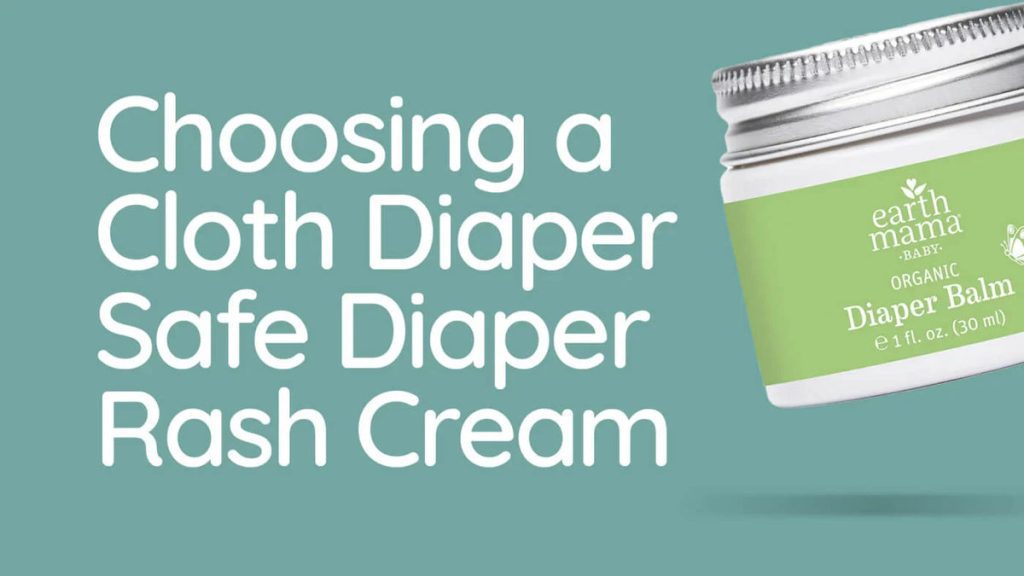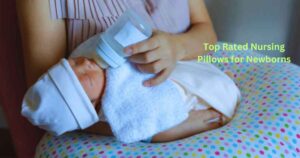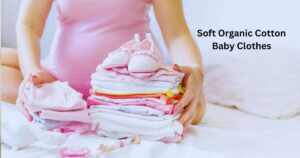Yes, baby diapers are generally safe. They undergo rigorous testing to ensure they meet safety standards.
Baby diapers are essential for modern parenting, providing convenience and hygiene. High-quality diapers are designed to prevent leaks, skin irritation, and rashes. They use soft, breathable materials that keep the baby’s skin dry and comfortable. It’s important to choose diapers from reputable brands, as they often adhere to strict safety guidelines.
Regularly changing diapers helps maintain skin health and prevents infections. Parents should also be aware of any signs of allergies or sensitivities, switching brands if necessary. Overall, baby diapers offer a practical solution for managing a baby’s needs while ensuring safety and comfort.
Introduction To Baby Diaper Safety
Baby diaper safety is a top concern for parents. Ensuring your baby’s comfort and health is crucial. Understanding the basics of diaper safety can help reduce risks. This section covers common parental concerns and myths about baby diapers.
Parental Concerns
Parents often worry about diaper rashes and allergies. These issues can cause discomfort for the baby. Choosing the right diaper can help prevent these problems. Look for diapers that are hypoallergenic and free from harsh chemicals. Check the diaper’s absorbency to avoid leaks and skin irritation.
Another concern is the diaper’s fit. A poorly fitting diaper can cause chafing and rashes. Ensure the diaper fits snugly but not too tight. This helps keep the baby comfortable and dry.
| Concern | Solution |
|---|---|
| Rashes | Use hypoallergenic diapers and change frequently. |
| Allergies | Avoid diapers with perfumes and dyes. |
| Leakage | Choose high-absorbency diapers. |
| Chafing | Ensure a proper fit. |
Common Myths
Several myths surround baby diapers. Some believe cloth diapers are always safer. Both cloth and disposable diapers have their pros and cons. Cloth diapers are reusable and eco-friendly. Disposable diapers offer convenience and high absorbency.
Another myth is that diapers can cause infertility. There is no scientific evidence to support this claim. Modern diapers are designed to be safe and comfortable for babies.
- Myth: Cloth diapers are always better.
- Fact: Both types have benefits and drawbacks.
- Myth: Diapers cause infertility.
- Fact: No scientific evidence supports this.
Understanding these concerns and myths helps parents make informed choices. Always prioritize your baby’s comfort and health.
Materials In Baby Diapers
Parents always wonder about the safety of baby diapers. The materials used in diapers play a crucial role. Understanding these materials helps ensure your baby’s comfort and health. Let’s dive into the different types of materials used in baby diapers.
Natural Vs. Synthetic
Baby diapers are made from both natural and synthetic materials.
Natural materials include cotton and bamboo. These materials are soft and breathable. They reduce the risk of rashes and allergies.
Synthetic materials include plastics and chemicals. These materials are used for their high absorbency. They keep the baby dry for longer periods.
Here is a quick comparison:
| Material | Type | Benefits |
|---|---|---|
| Cotton | Natural | Soft, breathable, hypoallergenic |
| Bamboo | Natural | Eco-friendly, absorbent, antimicrobial |
| Plastic | Synthetic | High absorbency, durable |
| Super Absorbent Polymers (SAP) | Synthetic | Absorbs large amounts of liquid |
Absorbent Technologies
Absorbent technologies in diapers keep the baby dry. They prevent diaper rash and discomfort.
Super Absorbent Polymers (SAP) are a common technology. These polymers can absorb and retain large amounts of liquid. SAP is often used in the core of the diaper.
Cloth-like materials are another technology. These materials are used for their softness and breathability. They provide a comfortable fit and reduce irritation.
Here’s a list of absorbent technologies used:
- Super Absorbent Polymers (SAP)
- Gel-forming agents
- Cloth-like materials
- Breathable outer layers
These technologies ensure that the baby stays comfortable and dry. They are designed to provide maximum protection and comfort.
Chemical Exposure Risks
Parents worry about the safety of baby diapers. They want to know if diapers have harmful chemicals. Babies have sensitive skin. They need extra protection. This section explores the possible risks of chemicals in baby diapers.
Potential Toxins
Baby diapers might contain potential toxins. These include dioxins, volatile organic compounds (VOCs), and phthalates. Dioxins can result from the bleaching process. VOCs can come from adhesives and inks. Phthalates make plastics soft and flexible.
Babies have delicate skin. They are more vulnerable to chemical exposure. Even small amounts can cause reactions. Parents should be aware of these potential toxins.
Regulatory Standards
Regulatory bodies set standards for baby diaper safety. These include the U.S. Consumer Product Safety Commission (CPSC) and the European Union (EU) regulations. They ensure that baby diapers meet safety requirements.
Manufacturers must comply with these standards. They test diapers for chemical levels. This helps to reduce the risk of harmful exposure.
| Regulatory Body | Region | Focus |
|---|---|---|
| CPSC | USA | Consumer product safety |
| EU Regulations | Europe | Product safety and chemical limits |

Credit: www.kinderclothdiapers.com
Skin Sensitivities
Skin Sensitivities in babies are a common concern for parents. Babies have delicate skin that requires special care. Diapers can sometimes cause discomfort or irritation. This section will delve into the causes of diaper rash and ways to prevent it.
Diaper Rash Causes
Several factors can lead to diaper rash:
- Prolonged Wetness: Wet diapers can irritate the skin.
- Friction: Tight or rough diapers can cause chafing.
- Chemicals: Some diapers contain harsh chemicals.
- Allergies: Babies can be allergic to certain materials.
- Infections: Bacterial or yeast infections can also cause rashes.
Preventive Measures
Follow these steps to prevent diaper rash:
- Frequent Changes: Change diapers every 2-3 hours.
- Gentle Cleaning: Use soft wipes or a damp cloth.
- Air Time: Allow the skin to breathe without a diaper.
- Barrier Creams: Apply cream to protect the skin.
- Choose Right Diapers: Opt for hypoallergenic diapers.
Here is a quick comparison of common diaper materials and their effects on sensitive skin:
| Material | Effect on Skin |
|---|---|
| Cotton | Generally soft and gentle |
| Plastic | Can cause irritation |
| Fragrance-Free | Less likely to cause allergies |
| Perfumed | May trigger rashes |
Environmental Impact
Baby diapers have a significant environmental impact. Most disposable diapers end up in landfills. They take hundreds of years to decompose. This raises concerns about waste management. Parents are now seeking eco-friendly diaper options.
Biodegradable Options
Biodegradable diapers break down faster than regular ones. They are made from natural materials like bamboo and corn starch. These materials decompose within months, not years. This reduces the strain on our landfills.
Some popular brands offer biodegradable diapers. These brands include:
- Eco by Naty
- Andy Pandy
- Bambo Nature
Using biodegradable diapers can lower your family’s carbon footprint. They are a more sustainable choice for your baby and the planet.
Sustainability Practices
Many diaper companies adopt sustainability practices. They focus on using renewable resources. They also aim to reduce their carbon emissions.
Here are some practices they follow:
- Using recycled packaging
- Supporting reforestation projects
- Utilizing energy-efficient manufacturing
Parents can also help by choosing cloth diapers. Cloth diapers can be washed and reused. This reduces the number of diapers sent to landfills. It also saves money in the long run.
Here is a comparison table of cloth vs. disposable diapers:
| Feature | Cloth Diapers | Disposable Diapers |
|---|---|---|
| Cost | Lower over time | Higher over time |
| Environmental Impact | Low | High |
| Convenience | Requires washing | Easy to use |
Choosing sustainable diapering options helps protect our environment. It’s a small step with a big impact.

Credit: www.amazon.com
Cost Vs. Safety
Choosing the right diaper for your baby can be challenging. Parents often weigh the cost vs. safety of baby diapers. Safety ensures your baby’s comfort, while cost affects your budget. Balancing these factors is essential for parents.
Budget-friendly Choices
Budget-friendly diapers are often more affordable. They fit well within most family budgets. These diapers can be found in many stores and online platforms.
Here’s a table comparing some popular budget-friendly diapers:
| Brand | Price per Diaper | Key Features |
|---|---|---|
| Brand A | $0.15 | Soft, Leak Guard |
| Brand B | $0.20 | Hypoallergenic, Wetness Indicator |
| Brand C | $0.10 | Fragrance-Free, Adjustable Tabs |
Budget-friendly diapers can still be safe. Look for key features like leak guards and hypoallergenic materials. These can help keep your baby dry and comfortable.
Premium Diapers
Premium diapers often come with advanced features. They can include superior absorption, organic materials, and enhanced comfort. These diapers usually cost more than budget-friendly options.
Here are some benefits of premium diapers:
- Better absorption
- Organic and natural materials
- Enhanced comfort and fit
- Extra protection against leaks
Premium diapers can provide extra safety. This can be important for babies with sensitive skin. Parents may prefer these for overnight use or long trips.
Parental Reviews And Experiences
Parents everywhere share their experiences with baby diapers. They discuss safety, comfort, and effectiveness. Reading these reviews helps new parents make informed choices.
Popular Brands
Several brands stand out in the diaper market. Parents often mention these brands in their reviews:
- Pampers – Known for their softness and absorbency.
- Huggies – Praised for their snug fit and leak protection.
- Luvs – Budget-friendly with good performance.
- Seventh Generation – Popular among eco-conscious parents.
- Honest Company – Loved for their natural materials and cute designs.
Community Feedback
Parents from various communities share their feedback. Here are some common themes:
| Aspect | Positive Feedback | Negative Feedback |
|---|---|---|
| Absorbency | Most parents find top brands highly absorbent. | Some report occasional leaks with cheaper brands. |
| Comfort | Soft materials receive high marks for comfort. | Some brands cause rashes on sensitive skin. |
| Eco-friendliness | Eco-friendly brands are appreciated for sustainability. | These diapers are often more expensive. |
| Fit | Parents love diapers that fit snugly. | Poor fit can cause leaks and discomfort. |
Parents value each other’s insights. These reviews provide a wealth of practical information. They help new parents choose the right diaper for their baby’s needs.

Credit: www.amazon.com
Expert Recommendations
Parents often wonder about the safety of baby diapers. Experts give useful advice on this topic. Let’s explore their recommendations.
Pediatrician Advice
Pediatricians play a key role in ensuring a baby’s health. They offer valuable insights on using baby diapers safely.
- Choose the right size: A well-fitting diaper prevents leaks and discomfort.
- Opt for breathable materials: Diapers with breathable layers reduce rashes.
- Change diapers frequently: Regular changes keep the baby dry and happy.
Safe Usage Tips
Using baby diapers safely is crucial for your baby’s comfort. Here are some tips:
- Avoid tight diapers: Loose diapers let the skin breathe.
- Check for allergies: Watch for any allergic reactions to materials.
- Use diaper cream: Apply cream to prevent diaper rash.
| Tip | Benefit |
|---|---|
| Choose the right size | Prevents leaks and discomfort |
| Opt for breathable materials | Reduces rashes |
| Change diapers frequently | Keeps the baby dry and happy |
| Avoid tight diapers | Allows the skin to breathe |
| Check for allergies | Prevents skin reactions |
| Use diaper cream | Prevents diaper rash |
Frequently Asked Questions
Are Baby Diapers Safe For Newborns?
Yes, baby diapers are safe for newborns. They are designed to be gentle and absorbent. Always choose hypoallergenic and dermatologically tested diapers for sensitive skin.
Can Baby Diapers Cause Rashes?
Yes, diapers can cause rashes if not changed frequently. Choose breathable, hypoallergenic diapers and maintain good hygiene to prevent rashes.
How Often Should I Change Baby Diapers?
Change baby diapers every 2-3 hours or immediately if soiled. Frequent changes help prevent rashes and keep your baby comfortable.
What Materials Are Used In Baby Diapers?
Baby diapers typically use soft, absorbent materials like cotton and SAP (super absorbent polymer). These materials are safe and effective in keeping babies dry.
Conclusion
Ensuring baby diaper safety is vital for your child’s health and comfort. Choose diapers free from harmful chemicals and allergens. Always monitor for any signs of discomfort or irritation. Consult with your pediatrician if uncertain. Your careful selection can keep your baby happy and safe.




